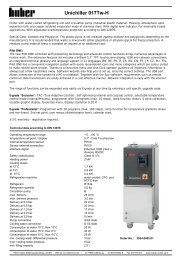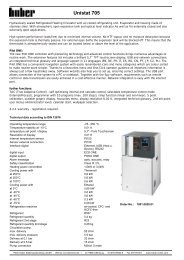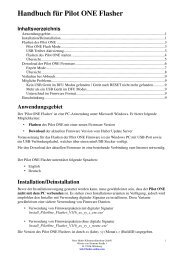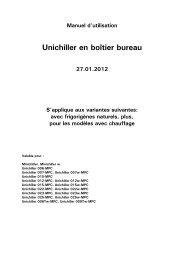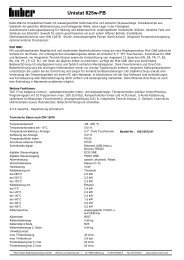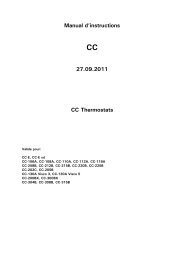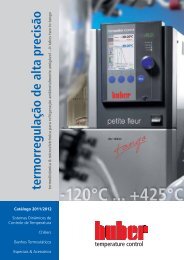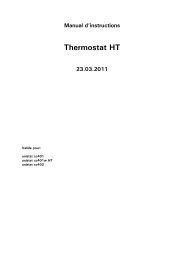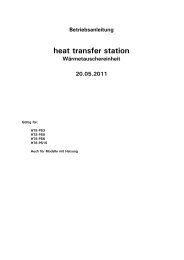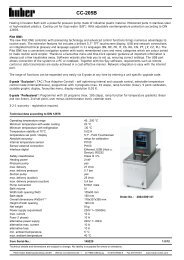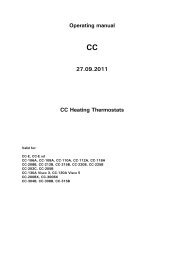Plug & Play - HUBER
Plug & Play - HUBER
Plug & Play - HUBER
Create successful ePaper yourself
Turn your PDF publications into a flip-book with our unique Google optimized e-Paper software.
108 www.huber-online.com<br />
Case Studies<br />
Setup Details:<br />
Temperature range: 50...250 °C<br />
Cooling power: 5,3 kW @ 250 °C…0 °C<br />
2,8 kW @ 20 °C<br />
0,9 kW @ 40 °C<br />
Heating power: 6,0 kW<br />
Hoses: 2x1,5 m; M38x1,5<br />
(#6659)<br />
HTF: DWTherm (#6479)<br />
Reactor: 50 litre chemjacketed<br />
glass reactor<br />
(uninsulated)<br />
Reactor content: 37 litre M90.055.03<br />
(#6259)<br />
Stirrer speed: 80 rpm<br />
Control: Process<br />
Case Study:<br />
Unistat ® 510w<br />
Simulated exothermic of 600 W @ 20 °C<br />
Jacket temperature<br />
Process temperature<br />
Setpoint<br />
Controlling simulated exothermic reactions within a<br />
Chemglass 50 litre glass-reactor<br />
Requirement<br />
This case study shows the effectiveness of a Unistat 510w connected<br />
to a 50 litre reactor in the control of a three simulated<br />
exothermic reactions of differing strengths at 0 °C and 20 °C<br />
generated by an electric immersion heater.<br />
Method<br />
The Unistat and reactor were connected using two 1,5 m<br />
insulated metal hoses. The reactor was filled with 37 litre of<br />
“M90.055.03”, a Huber supplied silicon based HTF.<br />
Results<br />
Once the “reaction” was under steady control the heater was<br />
turned “Off”.<br />
It can be seen how rapidly the ∆T between the process and<br />
jacket is increased to “suck” the thermal energy from the<br />
process to restore and maintain the process temperature setpoint.<br />
The results can be viewed in the following graphics.



